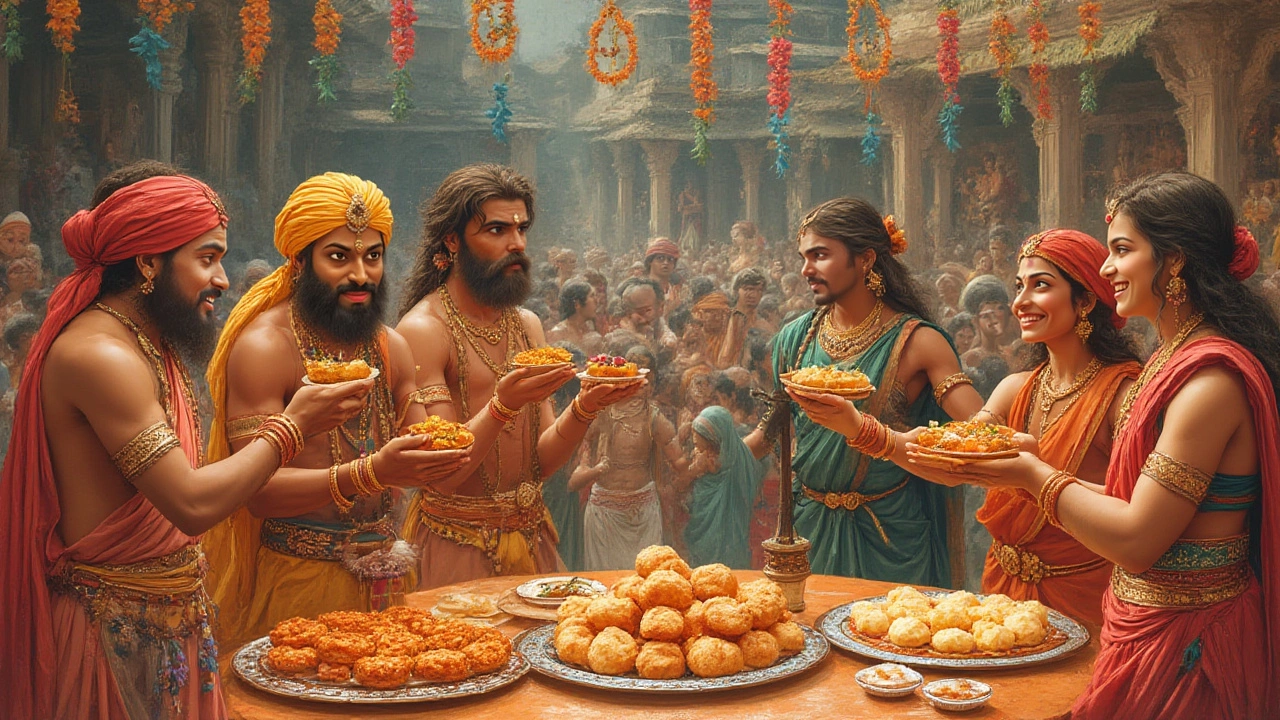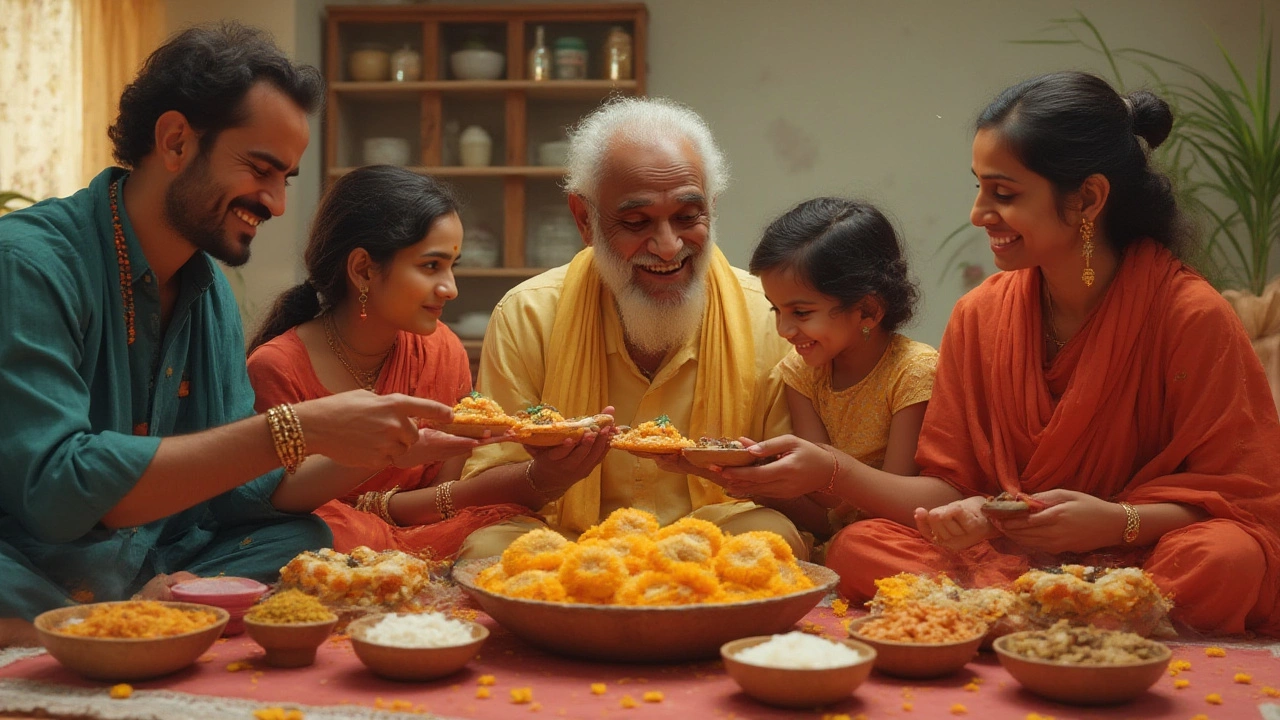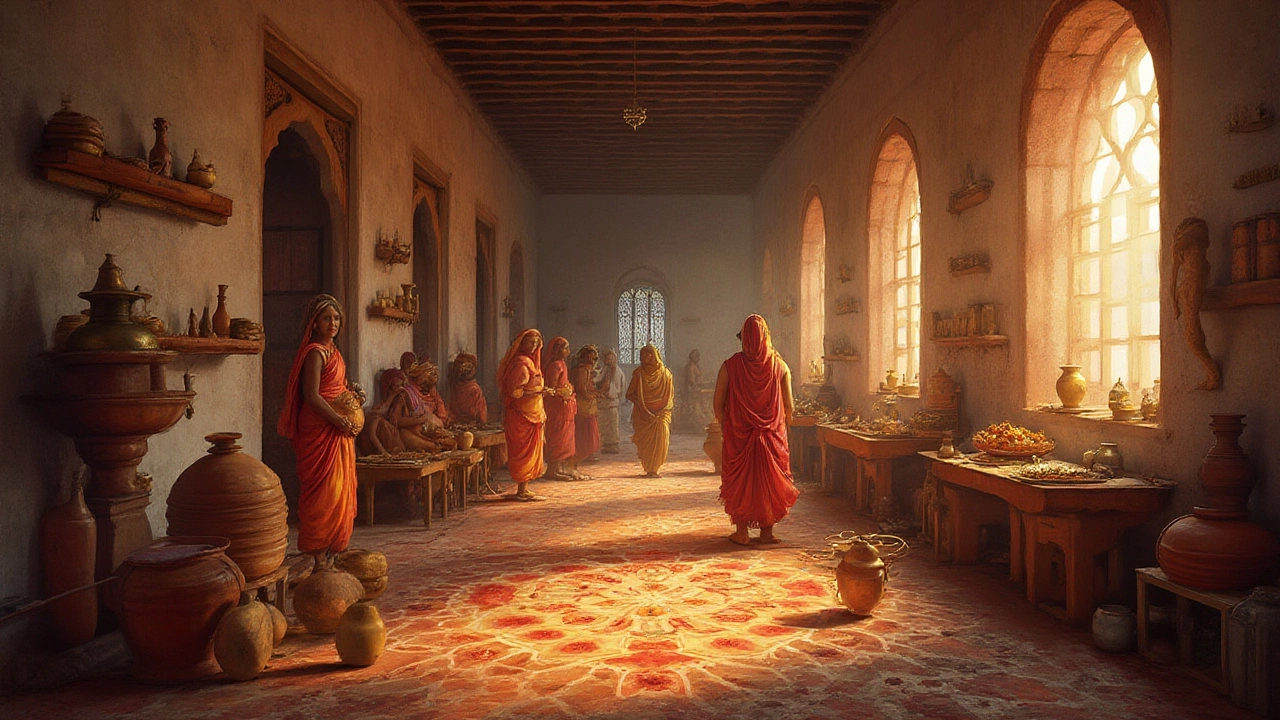If you’ve ever savored jalebi after a spicy meal or nibbled on barfi at a wedding, you’ve probably wondered: which Indian sweet came first? Sweets go hand-in-hand with celebrations across India, and some recipes have outlived entire kingdoms. Yet among rasgulla, laddoo, payasam, jalebi, and the hundreds of other treats, one holds the crown for being the oldest. This story isn’t just about sugar—it’s a bite into ancient tradition, civilization, and the roots of comfort food itself.
The Ancient Roots of Indian Sweets
Long before sugary confectionaries filled shop windows, the Indian subcontinent was already obsessed with sweets. Archaeologists discovered evidence of early sugarcane domestication on the banks of rivers like the Ganges, dating all the way back to the Indus Valley Civilization, some 4,000 years ago. But the most ancient sweet? Most food historians point to a humble, timeless classic—laddoo. The word ‘laddoo’ appears in ancient Sanskrit texts like the Sushruta Samhita, a medical treatise from around the 3rd–4th century BCE, where it’s mentioned as an energy-boosting medicinal ball. In those days, honey and jaggery (unrefined cane sugar) acted as primary sweeteners since refined sugar wouldn’t arrive from Persia until much later. Instead of the intricate, cream-filled mithai we see today, sweets were practical: grains (wheat, barley, chickpea flour), seeds, nuts, and ghee got rolled with honey or jaggery into dense, portable laddoos for travelers, soldiers, and temple goers.
You might think chocolate or caramel is ancient, but India’s laddoo predates them by several centuries. Even when foreign influences pushed new flavors into the subcontinent, laddoo never left center stage. It’s incredible to imagine that with every celebratory laddoo passed during Diwali or Ganesh Chaturthi, people are literally following a 2,500-year-old tradition—one that’s survived every empire and partition.
Of course, the story of Indian sweets is huge. Other ancient sweets, like kheer (a creamy rice pudding), also appear in the Mahabharata and classical Sanskrit literature. Back then, kheer used rice or barley, often mixed with milk and sweetened with honey. It was served at special occasions—and even offered during temple rituals, a tradition that endures in temple kitchens of Odisha and Tamil Nadu today.
Why did sweets become so central to Indian culture? For one, local ingredients were abundant—imagine endless, ripe sugarcane and fresh cow’s milk. Religious rituals also played a part: sweets were believed to have a purifying effect, perfect for offerings to deities. Add to that the climate’s knack for nurturing spices that flavor these confections, and you get a culinary tradition as rich as it is old.
India’s ancient sweet obsession is a story of invention as much as indulgence. Even before Alexander the Great’s army tasted “honey growing on a reed” (as they called sugarcane), Indian cooks and temple priests were shaping what we now call mithai culture.
Laddoo: The Oldest Sweet—and Its Many Faces
Okay, so laddoo takes the ancient crown. But don’t think of it as just one recipe. The laddoo you get today in a New Zealand Indian grocery or see piled high in an Auckland Diwali stall has hundreds—maybe thousands—of variations. In ancient texts, ladoos were mostly medicinal or ritual foods, sweetened with honey, smeared with ghee, and packed with grains and nuts. Today, they’re sometimes studded with cashews, rolled in edible silver, and delicately scented with rose or cardamom.
Why did laddoo survive for so long? Simplicity helped. Its ingredients—grains, jaggery, ghee—were always available. Early laddoos acted as energy bars for travelers or soldiers, with records of ‘til’ (sesame) laddoos and ‘methi’ (fenugreek) laddoos given to expectant mothers for strength. Over time, new types evolved:
- Besan laddoo: Roasted chickpea flour mixed with ghee and sugar, fragrant and soft.
- Boodi laddoo: Small fried gram flour droplets held with sugar syrup, classic at festivals.
- Motichoor laddoo: Like boodi but finer, often served at temples and weddings.
- Rava laddoo: Semolina-based, big in South India, sometimes coconut-laden.
- Gond laddoo: Includes edible gum, nuts, ghee—popular for winter nourishment.
Each region puts its spin depending on available crops and climate. Bengal has its nadu (coconut laddoo), Rajasthan its churma laddoo (wheat-butter-sugar), and even Goa makes cashew laddoo called kuriyo. Some kitchens add dry fruits, pistachios, or even edible flowers for color and aroma. The fun part is spotting laddoo at almost every milestone event—birth, marriage, housewarming, pujas—reflecting its revered, pan-Indian appeal.
So why laddoo, and not other sweets, gets the #1 title? Most authorities agree it’s the continuity—there’s written and culinary evidence right from ancient times to today. Even renowned food historian K.T. Achaya highlights laddoo’s presence from early South Asian history linking it to Ayurveda and temple offerings.

Other Ancient Sweets: Kheer, Peda, and Modak
No one’s downplaying laddoo’s empire, but Indian cuisine has other ancient sweets that are worthy of their own legends. Kheer, for example, is mentioned in Buddhist and Jain scriptures from nearly 2,000 years ago. Back then, travelers and monks found comfort in this milk-and-rice dessert. If you’ve stood in the endless lines at Indian temples—or even at the famous Jagannath Puri temple in Odisha—it’s likely you waited for some variation of kheer served as prasad (holy offering).
Modak, shaped like a lotus bud or plump dumpling, is the favorite sweet of Lord Ganesha. The ancient shape and style comes from Maharashtrian and South Indian influences: coconut and jaggery fillings wrapped in rice dough, steamed or fried. Not only is modak ancient, but it’s also tied directly to religious festivals like Ganesh Chaturthi—proof of its staying power. Ancient Puranas reference sweets like modak being offered to gods, sealing its role as an enduring classic.
Peda, another centuries-old delight, likely evolved from the practice of thickening milk for preservation in hot climates. Mathura, the birthplace of Lord Krishna, is famous for its peda, and pilgrim stories from centuries ago talk about sweet shops in temple towns making distinct, grainy peda using local milk.
Then there’s barfi, halwa, and more: barfi emerged after Persian influences brought in the custom of setting sweets with ghee and sugar, while various halvahs trace their ancestry through trade and empire. But even as new treats showed up—jalebi from Arab traders, or rasgulla from Odisha in the 19th century—none matched the ancient, documented legacy of laddoo or kheer.
| Sweet | Estimated Origin | Main Ingredients | Original Use |
|---|---|---|---|
| Laddoo | 3rd–4th century BCE | Grains, honey/jaggery, ghee | Medicinal, festive, travel food |
| Kheer | 4th century BCE | Milk, rice, honey/jaggery | Religious offering, feast dessert |
| Modak | 2nd century BCE | Rice flour, coconut, jaggery | Religious festivals, temple prasad |
| Peda | 6th century CE | Milk, sugar, cardamom | Festive, temple prasad |
The Science, Culture, and Symbolism Behind Sweets
Ancient Indian sweets are more than sugar and indulgence—they’re science, politics, medicine, and faith rolled into tiny bites. In Ayurveda, sweets like laddoo were tailored for specific health benefits. Fenugreek, sesame, and edible gum laddoos were recommended for energy and new mothers, while kheer was thought to soothe the digestive system. Modern studies confirm that natural sweeteners and nuts offer slow-release energy, making ancient sweets practical snacks long before granola bars arrived in the West.
Sweets in India get wrapped up in bigger stories. They’re the centerpiece of wedding feasts, festival bounty, and temple rituals. No major event—whether the birth of a child or inauguration of a new home—is complete without mithai. Gifting sweets is a gesture of goodwill, luck, and renewal. The symbolism runs deep: offering sweets to gods captures blessings, and sharing them with guests reinforces community ties.
Interestingly, sweet-making in India grew hand-in-hand with advances in agriculture. As sugarcane farming spread, so did the complexity of sweets. The 7th century saw the first mentions of crystallized sugar in Sanskrit texts, and by the medieval period, Indian sweet-makers (halwais) experimented with elaborate shapes, colors, and flavors. Persian, Arab, and later British influences added layers: rosewater, khoya (milk solids), and kaaju (cashews) made their way into classic Indian recipes, making every mithai shop a tiny culinary museum.
Want to spot real tradition? Look for the hand-shaped doodh pera in Mathura, the black-sesame ladoos in Mumbai markets, or the coconut nadu at a Tamil wedding. These sweets may look familiar, but their recipes and rituals stretch back centuries. My personal tip: if you ever travel in India, peek into a temple kitchen during a festival. The giant woks stirring kheer or stacks of steaming modaks aren’t just food; they’re living history.

Why the Oldest Sweets Matter Today
It’s easy to think of desserts as just treats for the tastebuds, but the oldest Indian sweets still shape how the country celebrates, mourns, heals, and hopes. Many places, like Bengal with its nadu or Tamil Nadu with its temple prasad laddoo, fiercely guard their unique recipes, passing them down through generations. With every sweet—especially the ancient laddoo—comes a sense of belonging and shared memory.
Modern sweets, imported ingredients, and Instagram-tier plating haven’t really dimmed the shine of these heritage desserts. Even in far-flung places like Auckland (where my golden retriever Luna will tell you, the aroma from my own kitchen during Diwali rivals any sweet shop), you’ll find home cooks rolling laddoos to mark special days, as their ancestors did centuries back. Shops put their spin on ancient classics, but the heart—a connection to centuries-old culture—remains unchanged.
Indian sweets are also big business, supporting cottage industries and families across the subcontinent, with thousands of halwais (sweet makers) carrying on traditions set by their grandparents. According to the latest culinary research, India’s sweets market just crossed $14 billion NZD in 2024—proof that the world still loves the taste of history.
If all this talk of ancient sweets has you itching to try your hand at history, it’s not hard. Try homemade laddoo: roast chickpea flour, add ghee until golden, sweeten with jaggery, toss in some crushed cardamom and chopped nuts, and roll into balls. That’s another tip—most ancient Indian sweets don’t actually require fancy gadgets or ingredients. They’re about simplicity, care, and the alchemy of everyday things transformed into celebration.
Sweets in India started as more than a treat—they were a symbol, a science, and a shared ritual that has lasted thousands of years. When you pop that next laddoo, remember: you’re taking part in the oldest, sweetest story of India.
